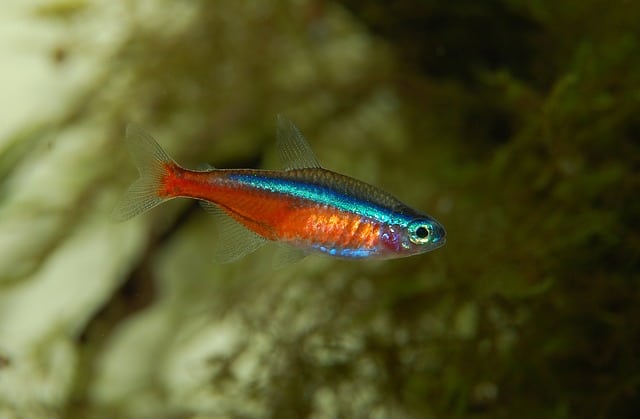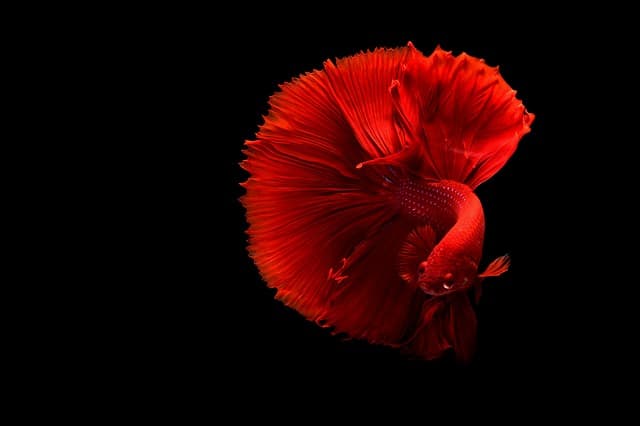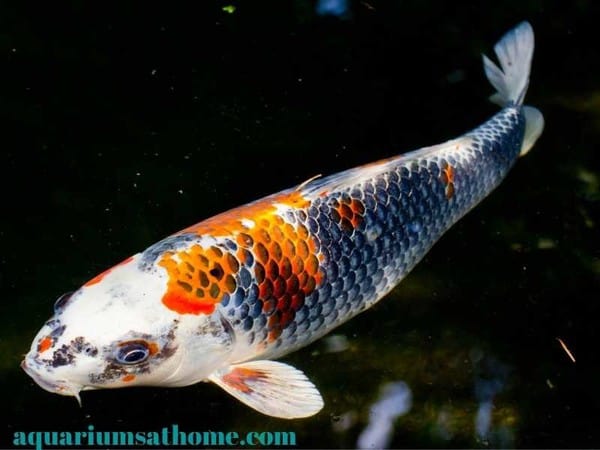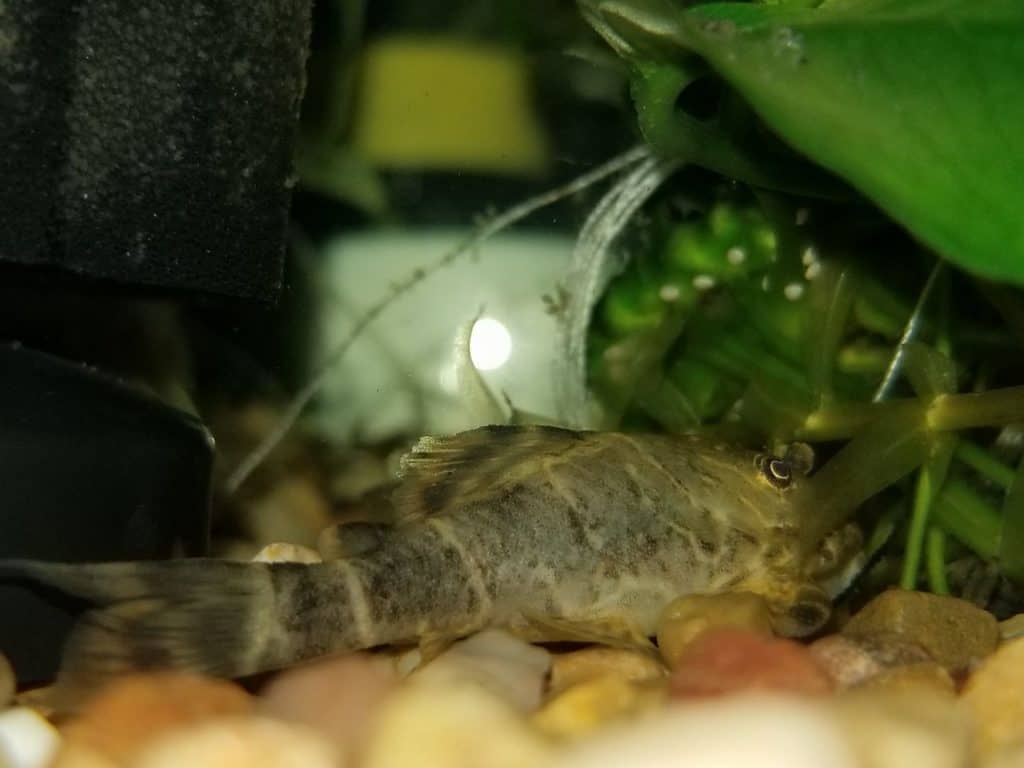Indian almond or catappa leaves come from the Terminalia tree found primarily in Africa, Asia, and Australia and is known for its medicinal benefits. Typically used to treat fin rot in fish, they also help condition and lower pH levels in blackwater tanks. But how much does it lower the pH, you may ask? Well, the answer is…
Indian almond leaves can lower soft water to a pH of 5.0 and moderately hard water to a pH around 6.0. Maintaining a consistent pH level is important to the overall health of your aquarium inhabitants. Extreme fluctuations in pH will ultimately cause stress and illness to fish and other aquatic creatures.
Now that you know Indian almond leaves will help lower pH levels in an aquarium, let’s take a closer look at this topic in more detail. I’ll explain how they work to reduce pH, how they’re used in betta fish tank, whether guppies like them, why they turn aquarium water brown, and what happens if you use too many.
So, if you’re ready to learn more about this dried plant and how it’s used in aquariums today, the let’s get started!
How Do Indian Almond Leaves Lower pH?
Indian almond leaves work in much the same way as driftwood or peat moss. They naturally lower pH in an aquarium by releasing tannic acid into the water. Apart from that, they provide cover for skittish fish and a natural stream-bottom look to your tank that’s both functional and appealing.
How Long Do You Leave Indian Almond Leaves in an Aquarium?
You can leave Indian almond leaves in an aquarium for up to 2 months. This allows ample time for the plant to work is medicinal magic! After a few months, the leaves will break down to just the veins at which point they can be removed from the substrate.
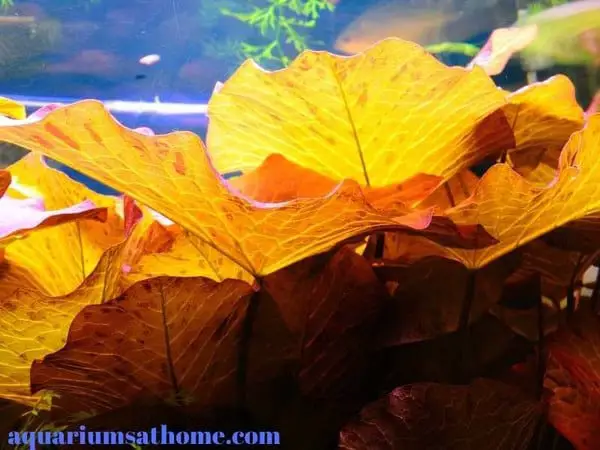
Why are Indian Almond Leaves Used in Betta Fish Tanks?
Indian almond leaves are used in betta (Siamese fighting) fish tanks for medicinal purposes. It’s believed that they help toughen the skin of the betta fish. This not only makes it more resilient to injury but also helps the skin heal faster after a fight.
How Do You Use Indian Almond Leaves for Betta Fish?
Using Indian almond leaves in a betta fish tank is easy. To reap the maximum medicinal benefit, try taking a handful of leaves and placing them in pot of boiling water. Allow the leaves to sit in the pot water for 3 or 4 days and then add a small amount of the extract to the water in your aquarium.
If you want to try Indian Almond Leaves check them out here on Amazon.
How Do You Use Indian Almond Leaves in Shrimp Tanks?
Indian almond leaves release anti-fungal and antibacterial properties into aquarium water that help shrimp fight off deadly parasites. Place a single leaf into the tank and leave it until it has fully broken down. The only piece left after awhile will be the stem at which point it can then be removed.
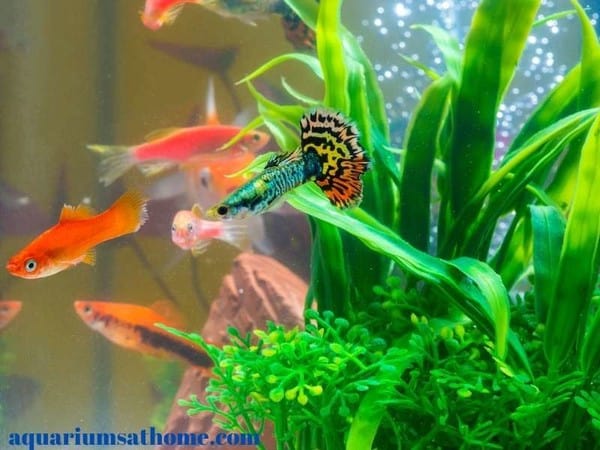
Do Guppies Like Indian Almond Leaves?
Since guppies are a brackish water fish, they’ll do fine with Indian almond leaves in their aquarium water. This plant is often found in their natural habitat so adding it to the tank will have a positive effect on their aquatic ecosystem.
Begin by placing a small amount in the tank as a test to see how the fish respond. Continue to test the water daily using your pH kit and once the level reaches 6.8 to 7.6, stop using the leaves. Take the time to spread the leaves evenly throughout the tank for better results.
Which Fish Don’t Like Indian Almond Leaves?
Fish that prefer hard water with a higher pH level won’t do well in an aquarium with Indian almond leaves. Species that thrive in alkaline water with a pH of 8.0 or 9.0 such as African and Central American cichlids shouldn’t be kept in a tank with Indian almond leaves.
Do Fry Like Indian Almond Leaves?
Apart from lowering pH, Indian almond leaves provide protection for fry as well as other small species of fish in captivity. By tarnishing the water, these plants make it difficult for predatory fish to seek out and eat eggs or offspring.
Why Do Indian Almond Leaves Change the Color of Water?
When added to an aquarium, Indian almond leaves naturally release tannins into the water. These organic compounds break down over time, staining the water and making it appear an amber or brownish-yellow color. This change in color is no way dangerous to fish or other aquatic inhabitants.
What Happens if You Use Too Many Indian Almond Leaves?
Using too many Indian almond leaves can cause sudden fluctuations in pH level. To remedy the problem, simply do a partial water change by removing at least 25% of the existing liquid and replacing it with clean, treated water. This will filter out the remaining tannins and restore the pH balance.
What are the Alternatives to Using Indian Almond Leaves?
There are a few alternatives to using Indian almond leaves in your aquarium. Though these options don’t provide the same medicinal benefits, they’ll still help to soften the water and lower the pH. Consider the following 5 substitutes:
Alder Cones
Alder cones are similar to mini pinecones and come from the black alder tree found primarily in Europe and North America. They’re often used to decorate and improve the water quality in shrimp tanks. They also work to lower the pH while providing an anti-fungal effect.
Dried Banana Leaves
Dried banana leaves are used in betta fish and freshwater tanks in much the same way as Indian almond leaves. Not only do they release beneficial tannins into the water, but they also provide a food source for microorganisms and invertebrates including shrimp and snails.
Driftwood
Driftwood can be placed along the substrate in your tank and is safe for most aquarium creatures. Some types leach high amounts of tannin, whereas others release barely enough to tint the water. Always boil driftwood before adding it to your aquarium to sterilize it and kill any algal/fungal spores attached to it.
Loquat Leaves
Loquat leaves come from trees in the Rosaceae family and can be used in lieu of Indian almond leaves in an aquarium. They release less tannins than driftwood, for example, and impart a less significant tint in the water. Like Indian almond leaves, they decompose at a slower rate and also act as a food source.
Peat Moss
Peat moss can easily be added to filter media bags inside your tank. Make sure to choose organic or chemical-free options, which are readily available at your local hardware store in the gardening department. Be forewarned however, this will make the aquarium cloudy for at least a day or two.
Why Choose Indian Almond Leaves Over Other Leaves?
Indian almond leaves break down more slowly than other leaves. This makes them a better option for aquariums in that they seep beneficial tannins into the water at a more balanced rate. As well, they don’t decompose as quickly or completely making it easier to remove the residual pieces from the tank.
It’s important to note that you should never place unknown leaves from your backyard into your aquarium. Although natural and organic, not all tree leaves are aquarium-safe and could potentially harm your fish.
Conclusion
In summation, Indian almond leaves can help lower pH levels in both soft and hard water aquariums. Soft water with very little carbonate hardness can be reduced to a pH of 5.0, whereas moderately hard water can be lowered to a level near 6.0. It’s important to maintain a constant pH level as drastic and sudden changes will cause stress and illness to fish and crustaceans.
Hopefully, this article has answered your questions regarding Indian almond leaves and how to use them in your fish tank. Thanks for reading and good luck with your aquarium hobby.
Related Posts
How to Grow Live Plants in Freshwater Aquarium [Tips Included]
What Types of Wood are Safe for Aquariums?
How Do You Get Driftwood to Sink in a Fish Tank?
How to Adjust pH in an Aquarium Safely?



